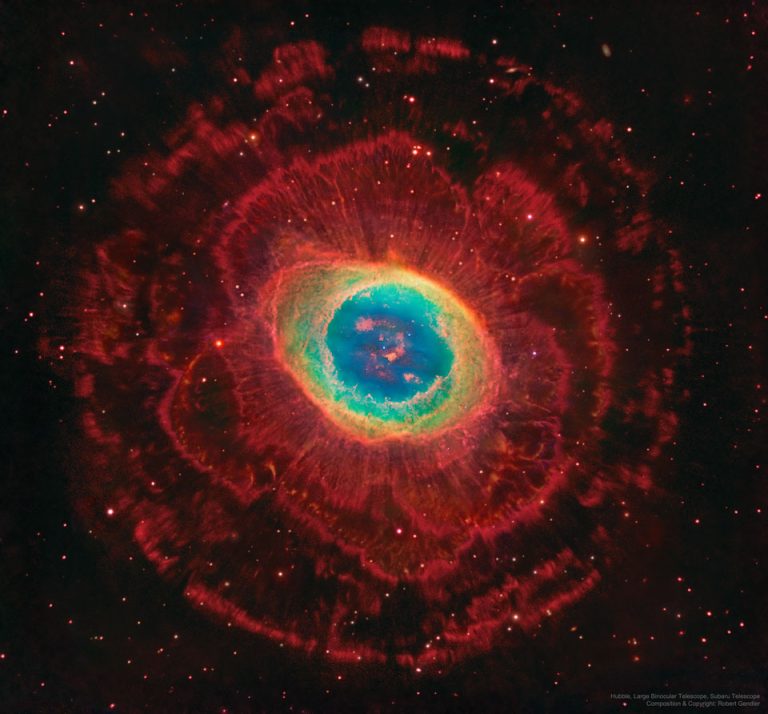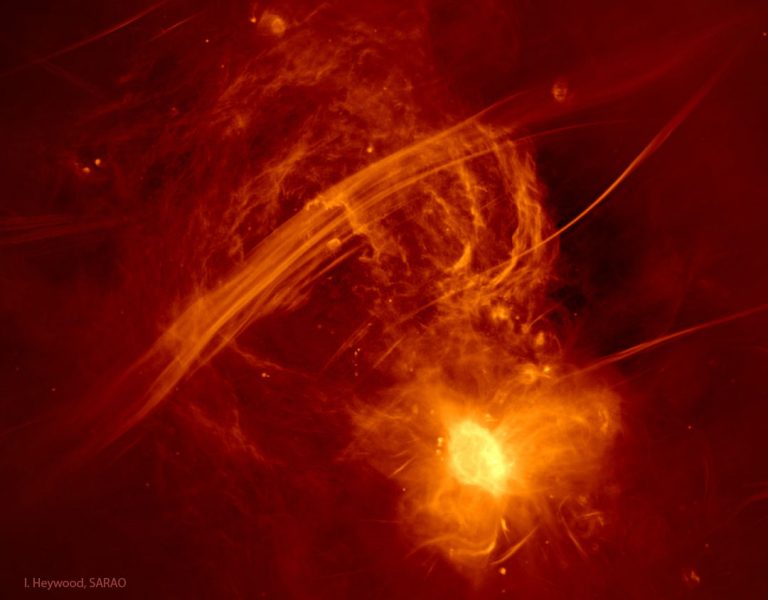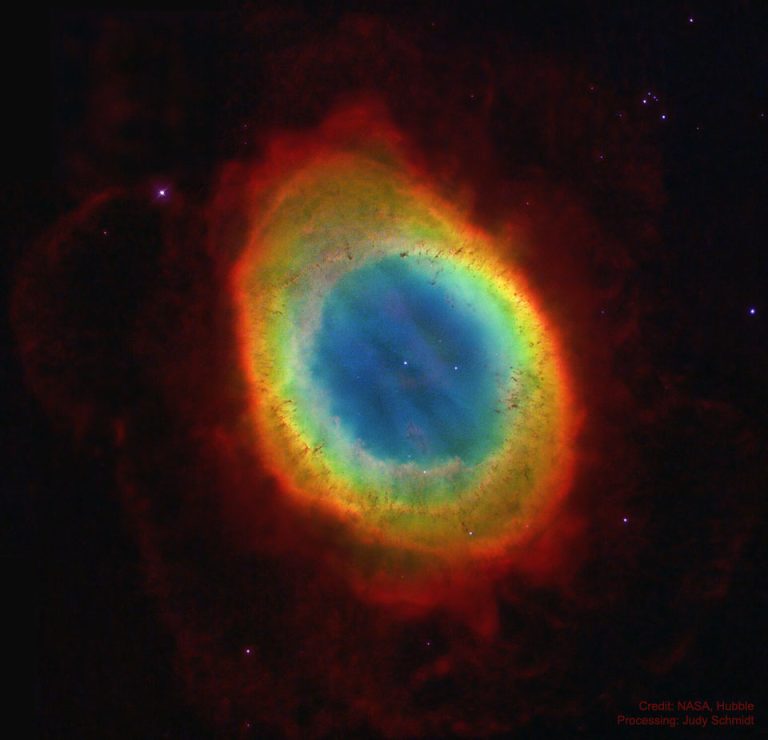环状星云的外环
中心是一个色彩缤纷的星云,是环形星云中最常见的部分。在这个中心周围可以看到几层结构不同的红色发光气体。有关更多详细信息,请参阅说明。

中心是一个色彩缤纷的星云,是环形星云中最常见的部分。在这个中心周围可以看到几层结构不同的红色发光气体。有关更多详细信息,请参阅说明。

2023年8月14日 The Ring Nebula from Webb Credit: NASA, ESA, CSA, JWST; Processing: Zi Yang Kong Explanation: The Ring Nebula (M57), is more complicated than it appears through a small telescope. The easily visible central ring is about one light-year across, but this remarkable exposure by the James Webb Space Telescope explores this popular nebula with a deep exposure in infrared light. Strings of gas, like eyelashes around a cosmic eye, become evident around the Ring in this digitally enhanced featured image in assigned colors. These long filaments may be caused by shadowing of knots of dense gas in the ring from energetic light emitted within. The Ring Nebula is an elongated planetary nebula, a type of gas cloud created when a Sun-like star evolves to…

2023年4月3日 The Galactic Center Radio Arc Image Credit: Ian Heywood (Oxford U.), SARAO; Explanation: What causes this unusual curving structure near the center of our Galaxy? The long parallel rays slanting across the top of the featured radio image are known collectively as the Galactic Center Radio Arc and point out from the Galactic plane. The Radio Arc is connected to the Galactic Center by strange curving filaments known as the Arches. The bright radio structure at the bottom right surrounds a black hole at the Galactic Center and is known as Sagittarius A*. One origin hypothesis holds that the Radio Arc and the Arches have their geometry because they contain hot plasma flowing along lines of a constant magnetic field. Images from NASA’s Chandra…

2023年4月2日 M57: The Ring Nebula from Hubble Image Credit: NASA, ESA, Hubble Legacy Archive; Processing: Judy Schmidt Explanation: It was noticed hundreds of years ago by stargazers who could not understand its unusual shape. It looked like a ring on the sky. Except for the rings of Saturn, the Ring Nebula (M57) may be the most famous celestial circle. We now know what it is, and that its iconic shape is due to our lucky perspective. The recent mapping of the expanding nebula’s 3-D structure, based in part on this clear Hubble image,indicates that the nebula is a relatively dense, donut-like ring wrapped around the middle of an (American) football-shaped cloud of glowing gas. Our view from planet Earth looks down the long axis of…

2021年8月18日 Rings Around the Ring Nebula Image Credit: Hubble, Large Binocular Telescope, Subaru Telescope; Composition & Copyright: Robert Gendler Explanation: The Ring Nebula (M57), is more complicated than it appears through a small telescope. The easily visible central ring is about one light-year across, but this remarkably deep exposure – a collaborative effort combining data from three different large telescopes – explores the looping filaments of glowing gas extending much farther from the nebula’s central star. This composite image includes red light emitted by hydrogen as well as visible and infrared light. The Ring Nebula is an elongated planetary nebula, a type of nebula created when a Sun-like star evolves to throw off its outer atmosphere to become a white dwarf star. The Ring Nebula…

2021年8月17日 M57: The Ring Nebula from Hubble Image Credit: NASA, ESA, Hubble Legacy Archive; Processing: Judy Schmidt Explanation: Except for the rings of Saturn, the Ring Nebula (M57) is probably the most famous celestial circle. Its classic appearance is understood to be due to our own perspective, though. The recent mapping of the expanding nebula’s 3-D structure, based in part on this clear Hubble image,indicates that the nebula is a relatively dense, donut-like ring wrapped around the middle of a (American) football-shaped cloud of glowing gas. The view from planet Earth looks down the long axis of the football, face-on to the ring. Of course, in this well-studied example of a planetary nebula, the glowing material does not come from planets. Instead, the gaseous shroud…